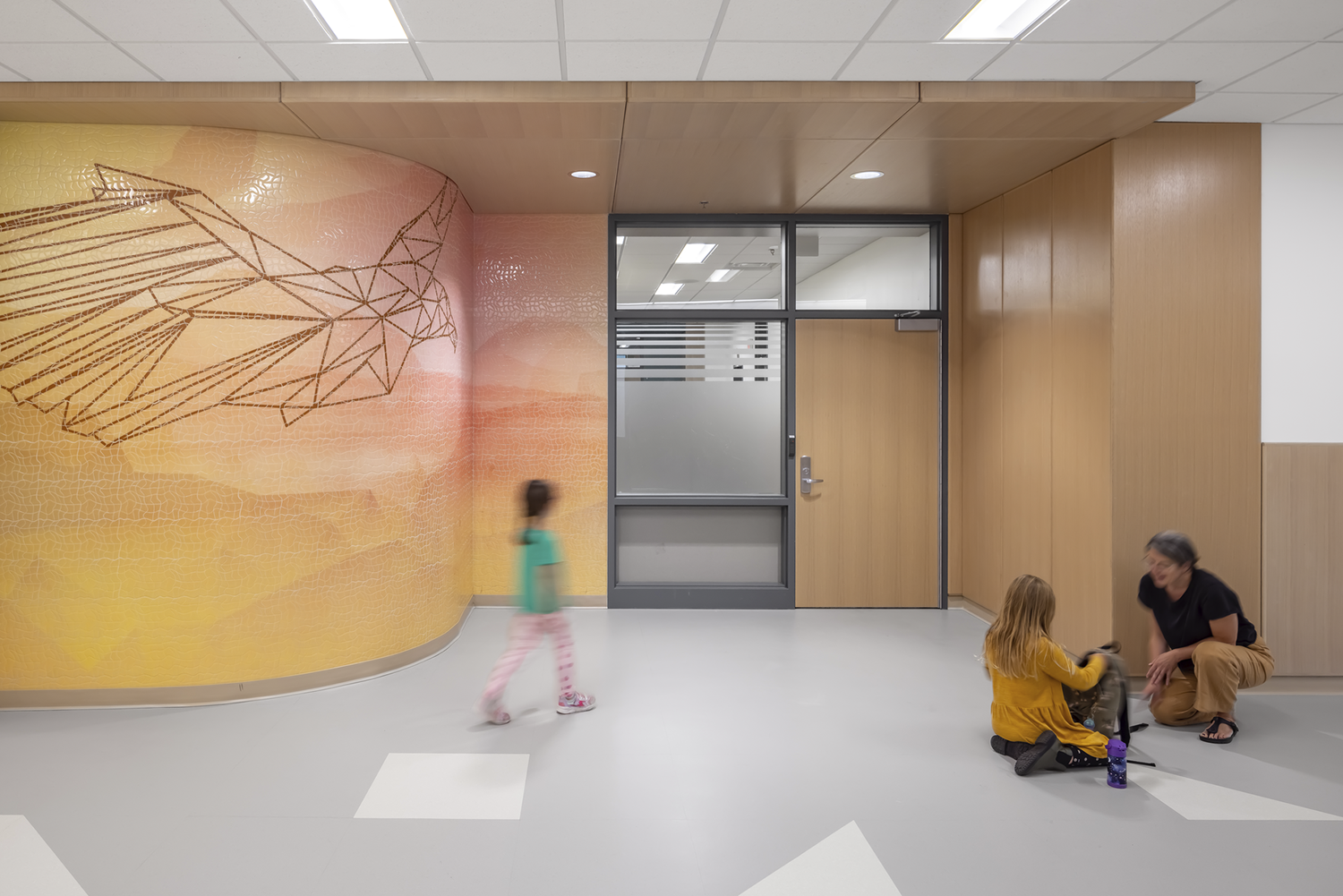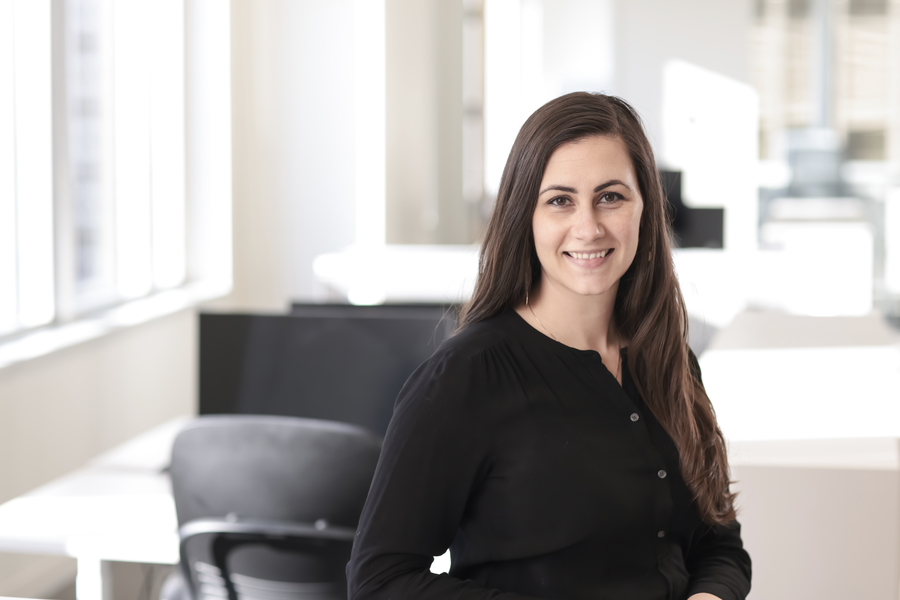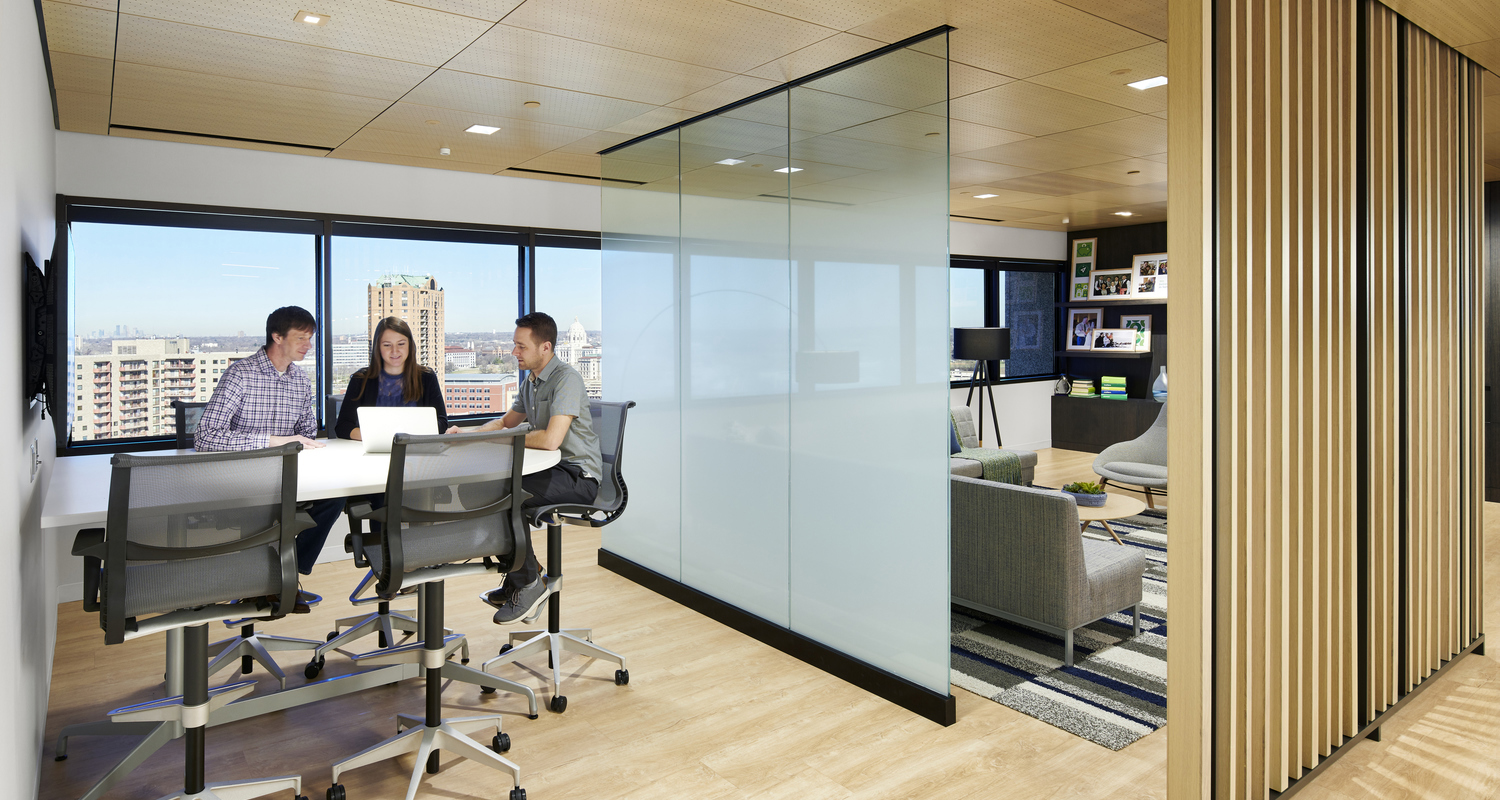In our latest episode, we sit down with the talented graphic design team at BWBR. Joining us is senior graphic designer Rachel Slette, along with design team members Maddie Smith, Emily Prigge, and Avery Gidley. Together, they shed light on their roles in shaping spaces and their experiences through the creative process.
Once you start seeing graphic design work in the spaces around you, you won’t be able to unsee it. Window films to wall coverings, acrylic panels, signage, lettering, wayfinding messages…the list goes on. A graphic designer’s touch is everywhere. At BWBR, the graphic design team ventures into the physical realm, envisioning three-dimensional spaces and conceptualizing how two-dimensional elements will interact. That means considering an array of materials and components with innumerable moving parts.
Let’s meet the folks making it happen:
As a child, Rachel Slette always carried a sketchbook and dabbled in various crafts. In doing research leading up to college, she discovered that graphic design would give her enough variety to use all her creative powers. She studied graphic design at the University of Wisconsin–Stout and has been with BWBR for 15 years.
Avery Gidley studied graphic design at Iowa State but didn’t explore the architecture side until starting at BWBR as a remote intern during the pandemic. She loved the variety, the workload, and the people — clients and team members — and wanted to stay part of the BWBR community.
Emily Prigge was a creative explorer from early childhood. She admits to stealing her mom’s camera to take photos and drawing on walls — and now that creativity is the foundation of her career.
Maddie Smith started college as a nursing major despite having an interest in a creative career. During her studies, she met with one of the professors in the design school and felt an immediate affinity for the curriculum.
This crew has a hand in a wide range of functions across our firm, from defining and implementing our brand standards to creating incredible graphics that enhance our clients’ spaces.
A (Very) Versatile Role
Rachel says the graphic design team at BWBR plays an integral role in up to 95% of client project work. And it’s not just what you see in the finished project — they’re also working hard behind the scenes. The graphic designers at BWBR work on subtle touches like color schemes for floor plans, predesign reports, and other preparation materials. “You name it, we’ve probably done it either one time or 100 different times,” says Rachel. Their work is essential to conveying concepts and messaging to the client, making sure that everyone’s aligned.
Alignment and collaboration are at the heart of the entire BWBR process, and graphic designers are a big part of that. The graphics team works closely with project managers and principals to establish work effort parameters and timelines. They immerse themselves in the overall design team discussions, often leveraging tools like Miro boards to grasp the project’s visual language. Maddie particularly enjoys seeing the finishes that the interior designer has selected and working within those choices to enhance the project through graphics, making everything “cohesive and consistent.”
Between project managers, principals, and the broader design team, BWBR’s graphic designers constantly interact, ideate, gather feedback, and foster relationships. Each project takes shape through a dynamic, iterative process, and every project is different. Of course, that’s a big part of what makes it fun.
Blending Left Brain and Right Brain
While graphic design might sound like a wholly creative endeavor, there’s both an art and a science to it. The team thrives in an environment where they can balance creativity with structure, and deadlines and parameters serve as catalysts for imaginative solutions.
Sometimes, they’re anchoring dreamy inspirations with practicalities like availability of materials and timeline. Other times, they’re invigorating pragmatic plans, presenting a range of innovative options to enhance a space. And if something isn’t working, they’re consistently prepared to pivot with a lineup of alternative solutions.
Whether they are designing a preschool wayfinding system using color and to-scale animal icons to guide students, creating a nature-inspired wall graphic to provide privacy and soothing ambience in a behavioral health space, or interpreting a client’s branding to reflect their culture and inspire their staff, the team’s journey is marked by navigating technical challenges and transforming them into custom design experiences.
Finding Inspiration Online and Off
Like most graphic designers, our team finds inspiration online through sites like Pinterest. Emily loves perusing Getty images and has also curated an Instagram feed full of inspiration from other designers. “It’s super inspiring to see what other people do,” she says. “With graphic design, there’s always something new, there’s always something that’s changing.”
And while the Internet has opened up a world of possibilities, BWBR’s designers also unplug to get inspired. Avery makes a point of spending time in nature to spark creativity. Maddie pursues new hobbies; ideas for work crop up while baking, sewing, and even building a greenhouse. The group also has monthly “creative collective conversations” where they share their latest sources of inspiration, from music albums to articles — “anything that sparks a little bit of creativity in your week or month,” says Avery. Textures, colors, patterns, and shapes can be found anywhere — and this team will never run out of fresh ideas.




